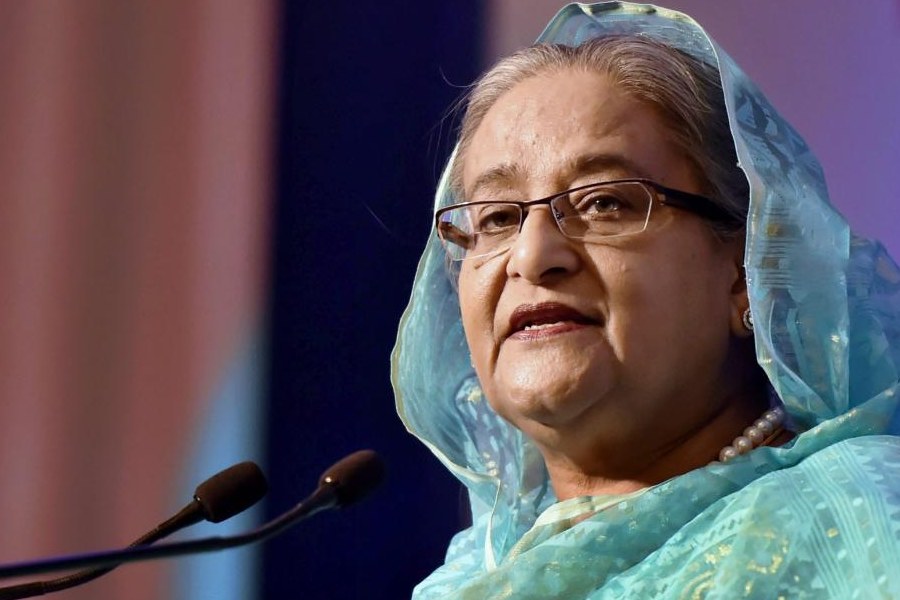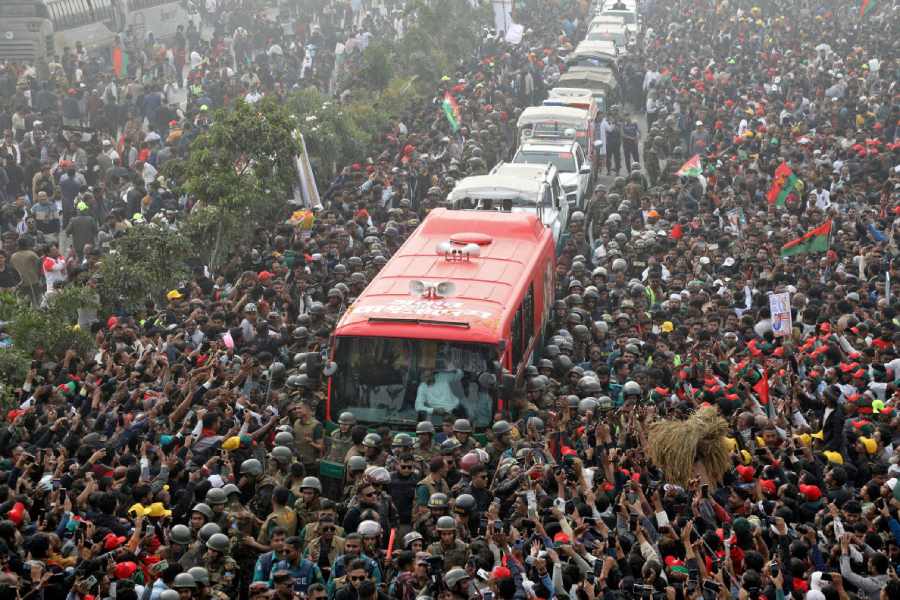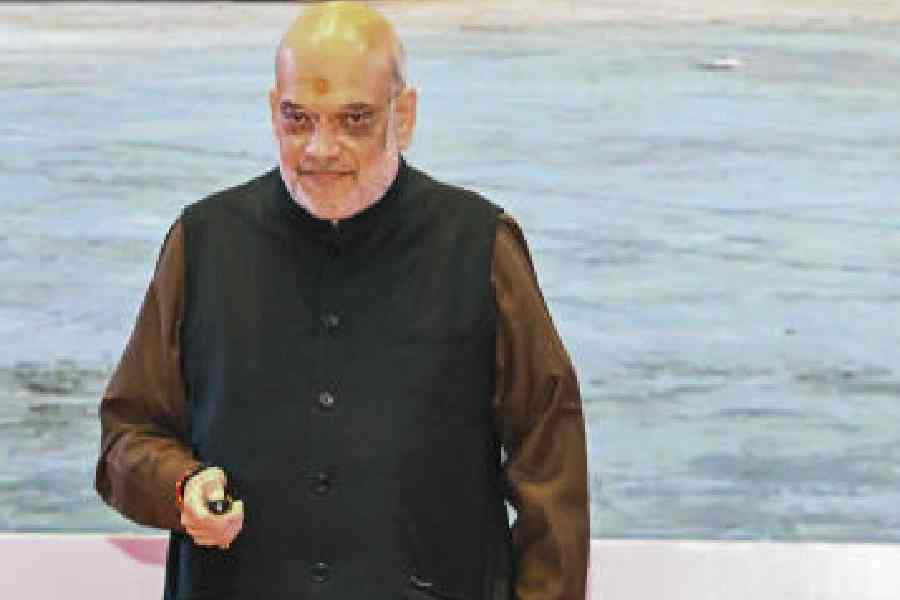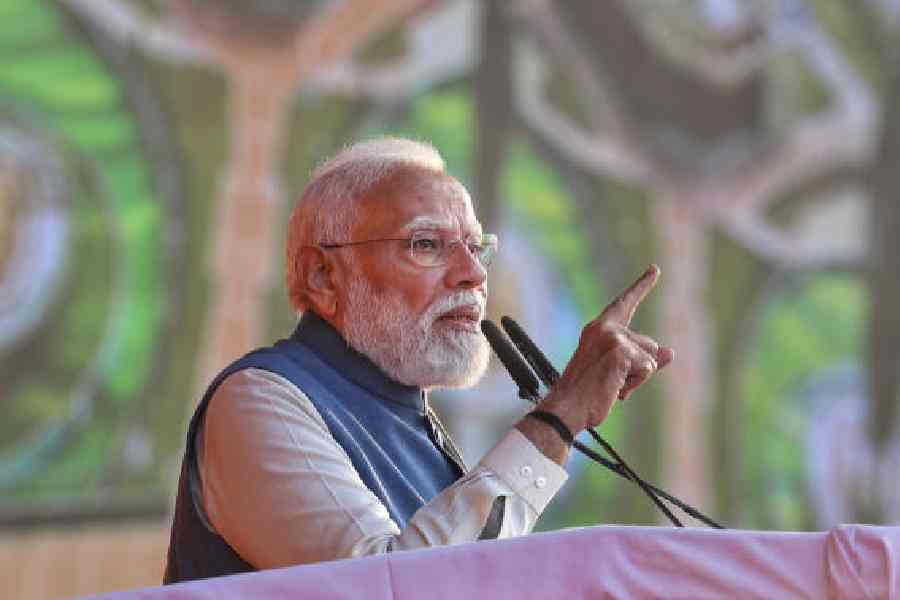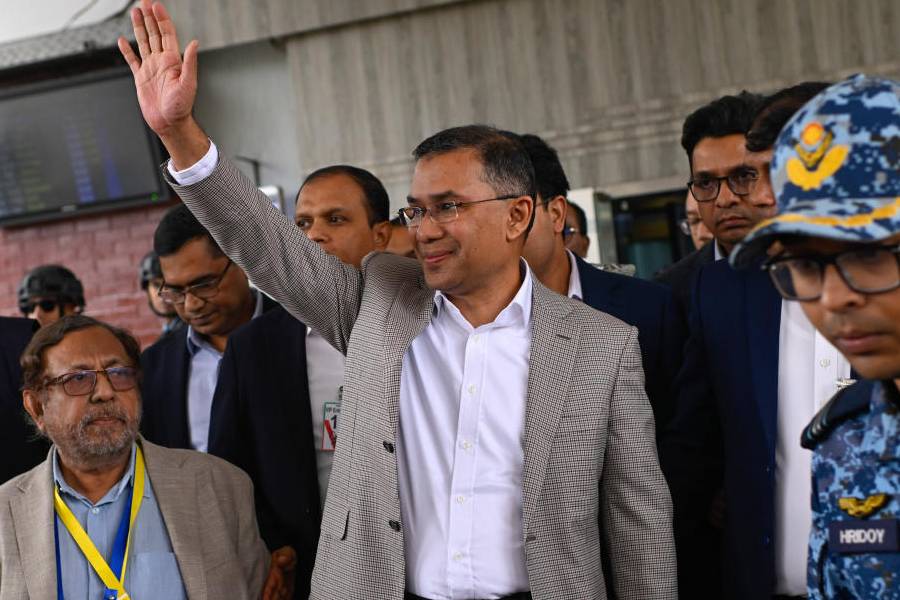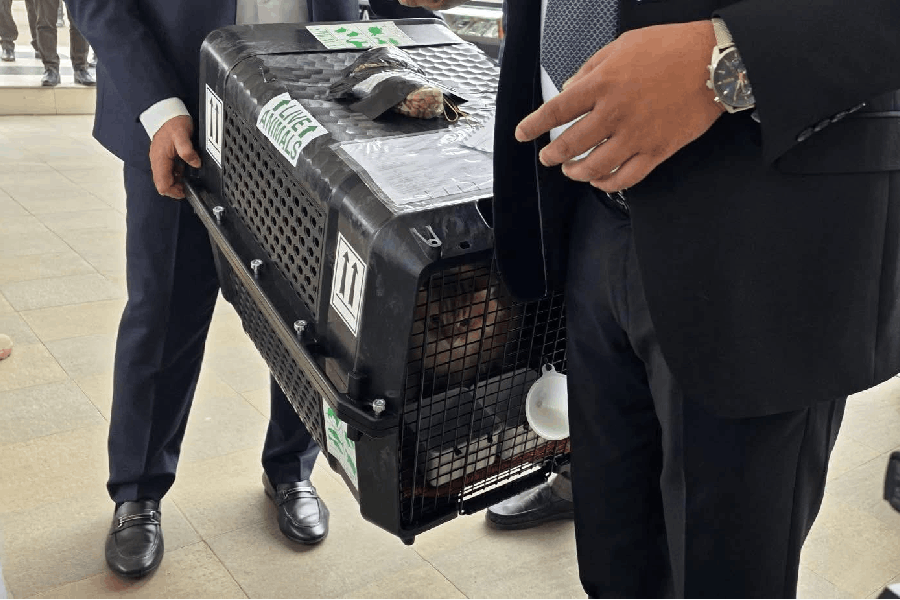 |
| Bahuda yatra in Paradip. Telegraph picture |
Non-Hindus joined hands with Hindus on Monday to observe bahuda yatra in Paradip port town.
People of residential colonies and suburban areas, regardless of caste, creed and religious barriers, pulled the chariot here on Monday. Muslims and Christians were passionately involved in the festival.
“Paradip has an enchanting history of communal harmony and co-existence. The port town has never seen communal violence or caste-inspired conflict,” said Sriman Mishra, a literary critic.
“The 60-foot high Aruna Stambha (the holy pillar erected near the Jagannath temple entry gate) speaks the story itself. A concrete arch adorns the top of the pillar, which is engraved with holy symbols of Hinduism, Islam, Christianity and Sikhism,” said Prakash Mishra, Paradip Port Trust’s public relations officer.
The rath yatra bears testimony to the communal amity prevailing in this region, said Sarat Rout, a trustee member of local Jagannath temple at Madhuban area of the port town. Though numerically, a small number of minority community members took part in the car festival, it was a gesture of goodwill and amity. The non-Hindus, who took part in the festival, were mostly employees of Paradip Port Trust and industrial workers living on the periphery of the port town.
Many of them visited the temple and offered prasad to the deity. Unlike elsewhere, non-Hindus here are allowed to offer puja at the temple and pull the chariot, Rout said.
The gates of the Jagannath temple had been thrown open to Muslims and followers of other religions since the temple was established here in the early seventies.
There is no restriction on non-Hindus when it comes to visiting the temple. This tradition has been prevalent since the day the temple opened in 1972, said state endowment commission office sources.
“After the port civil township came up in late sixties, some employees of the port trust volunteered to build the temple. With generous donations from all employees of the port trust, the temple was built in 1972. The donors also included employees who were from minority communities,” Rout said.
“There was initial resistance from a section of devout Hindus. But the view of the majority prevailed and we decided to set a precedent. The temple management committee had adopted a resolution not to restrict minority communities into the temple,” said Rout.
“The then chairman of Paradip Port Trust, M.Y. Rao, who was a Christian, had inaugurated the temple and offered bhog to Lord Jagannath,” Rout added.
“Followers of religions other than Hinduism are not allowed to enter the Puri Jagannath temple. But we differ in our stand. We feel proud to be an unique amalgamation of religious spirit and faith,” said Trilochan Panda, head priest of the 38-year-old temple.
Foreign tourists visiting the port town often make it a point to catch a glimpse of Lord Jagannath here as such darshan is denied to them in the remaining Jagannath temples across the state. The tourists make sure they taste the ‘abhada’ or God’s prasad prepared in the temple kitchen.


